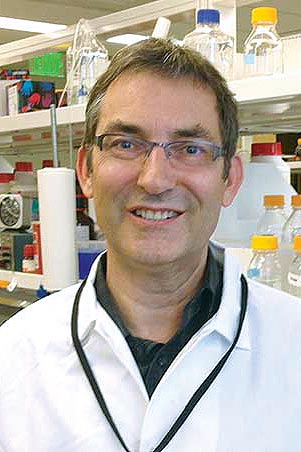Punching Out
The Ebola virus breaks through immune systems like a boxer
While his research won’t help cure the most current outbreak of Ebola, Lukas Tamm and his small team of researchers at UVA are making significant strides in figuring out how the deadly virus works.

Several years ago, Tamm, a distinguished professor of molecular physiology and director of UVA’s Center for Membrane Biology, became the first scientist to discover that Ebola shapes itself into a sort of fist when it first enters a cell.
This past spring, Tamm and his team announced they discovered that a trio of amino acids inside the virus activate that fist. In early August, about a month after the beginning of the current Ebola outbreak, which by then had infected some 1,200 people, killing more than half of them, Virginia Magazine asked Tamm about his research.
Virginia: There are other viruses, and other hemorrhagic viruses, but do any of them work the same way as Ebola?
Lukas Tamm: No other viruses that we know of behave like Ebola. It’s very unique, even in how it looks, like a long worm, whereas viruses we are more familiar with, like flu and HIV, are more spherical. When it comes into contact with a cell, a good analogy is that it looks like an extended hand. Once it’s inside, however, it makes that fist, which begins destroying the cell.
Why is so little known about Ebola?
There are many reasons. The first known outbreak was in 1976, but it was somewhat limited, and not a worldwide pandemic, like the flu and HIV have been. We use something very similar to an MRI, like the kind you might get on your knee after hurting it at the gym, to see how the virus works on a cellular level. That technology wasn’t even available 20 years ago.

Are you working with the virus in Charlottesville?
No. Nobody here is working with Ebola. We don’t have the facilities for that. We make empty shells that are called virus-like particles. We have to put them together. There’s no “guts” to them. But we’ve made them so we are pretty certain they behave in a similar way when entering a host.
What would be the benefit of your research?
If we can figure out a way to block those three amino acids from combining to make that fist, we could stop Ebola. But you have to know what you’re dealing with first. If we can find out all the necessary aspects of the virus, others can take that information and develop therapies and cures. That’s the important role basic science labs like ours have in fighting diseases.